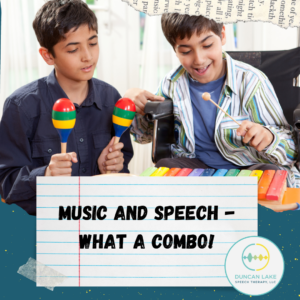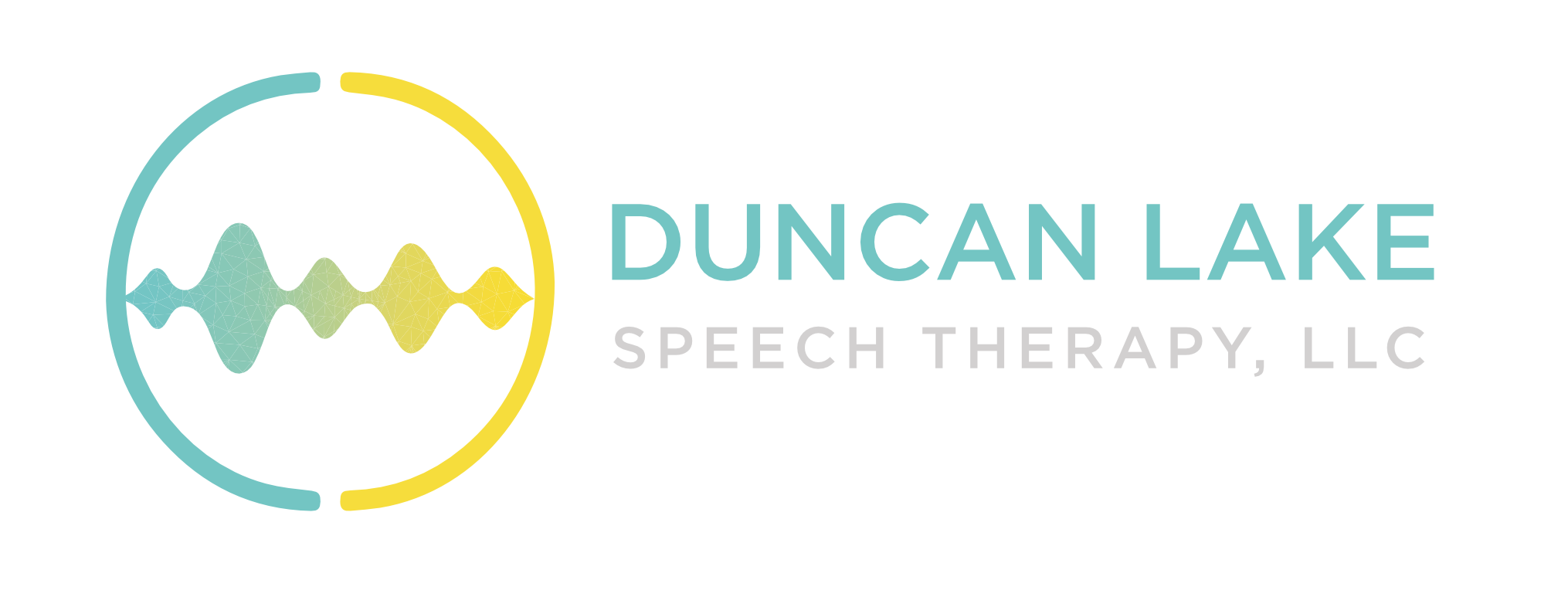Written by Hannah Blackwell, M.A, CF-SLP
Duncan Lake Speech Therapy, LLC
In speech therapy, especially with little ones, we use music all the time to make things more fun! But did you know, singing actually accesses a different part of the brain than we use for speech and language? When we speak, we rely on the left side of our brain to turn our thoughts into words by activating muscle and motor movements.1 When we sing, we rely more on the right side of our brain to keep tempo and produce the right melody. This concept can be (andhas been) used in speech therapy!
The benefits of music have been seen in use with certain motor-speech disorders. 2 People who stutter have can benefit from singing, with research showing moments of stuttering to be greatly reduced when singing, especially when singing along to familiar lyrics. Also, although there isn’t much research on the topic, preliminary research on the use of singing in therapy for people with Parkinson’s has shown promising results by improving speech intelligibility and loudness.

Melodic intonation therapy (MIT) is a well-researched technique which taps into the right side of the brain in order to assist the left side in producing speech. 3 This form of therapy is often used with people who have damage on the left side of their brain resulting in severe, non-fluent aphasia causing them to have extreme difficulties getting their words out. MIT uses the musical properties of speaking, including rhythm and melody, to help these patients improve their expressive language. Incorporating the right side of the brain assists people with damage to the left side of their brain in producing speech.
Although few studies have been done, another area which has shown promise using music in speech therapy is in treatment of autism spectrum disorder (ASD). A 2010 publication by Wan et al. describes a technique, which is a modified version of MIT, called auditory-motor mapping training (AMMT). 4 AMMT uses vocalizations and percussion instruments to progress children from passive listening to producing target words/phrases on their own. A more recent case study in 2016 shared positive results of this technique used in treatment of children with ASD who were nonverbal, demonstrating AMMT as a promising new technique. 5
As we can see, there are a lot of helpful ways to use music in speech therapy, but there is also a lot more research to be done to figure out the best ways to use it. So, while the researchers in our field keep diving into this subject, we can keep educating ourselves and figuring out the best ways to treat our patients, keeping in mind that music may just be the answer.
References
1. Brookes, G. (2014, June 19). The science of singing: How our brains and bodies produce sound. The Guardian. https://www.theguardian.com/lifeandstyle/2014/jun/19/science- singing-how-our-brains-bodies-produce-sound
2. Wan, C. Y., Rüber, T., Hohmann, A., & Schlaug, G. (2010). The Therapeutic Effects of Singing in Neurological Disorders. Music Perception, 27(4), 287–295. https://doi.org/10.1525/mp.2010.27.4.287
3. Norton, A., Zipse, L., Marchina, S., & Schlaug, G. (2009). Melodic Intonation Therapy: Shared Insights on How it is Done and Why it Might Help. Annals of the New York Academy of Sciences, 1169, 431–436. https://doi.org/10.1111/j.1749-
6632.2009.04859.x
4. Wan, C. Y., Demaine, K., Zipse, L., Norton, A., & Schlaug, G. (2010). From music making to speaking: Engaging the mirror neuron system in autism. Brain Research Bulletin, 82(3–4), 161–168. https://doi.org/10.1016/j.brainresbull.2010.04.010
5. Chenausky, K., Norton, A., Tager-Flusberg, H., & Schlaug, G. (2016). Auditory-Motor Mapping Training: Comparing the Effects of a Novel Speech Treatment to a Control Treatment for Minimally Verbal Children with Autism. PLOS ONE, 11(11), e0164930.
https://doi.org/10.1371/journal.pone.0164930



Recent Comments